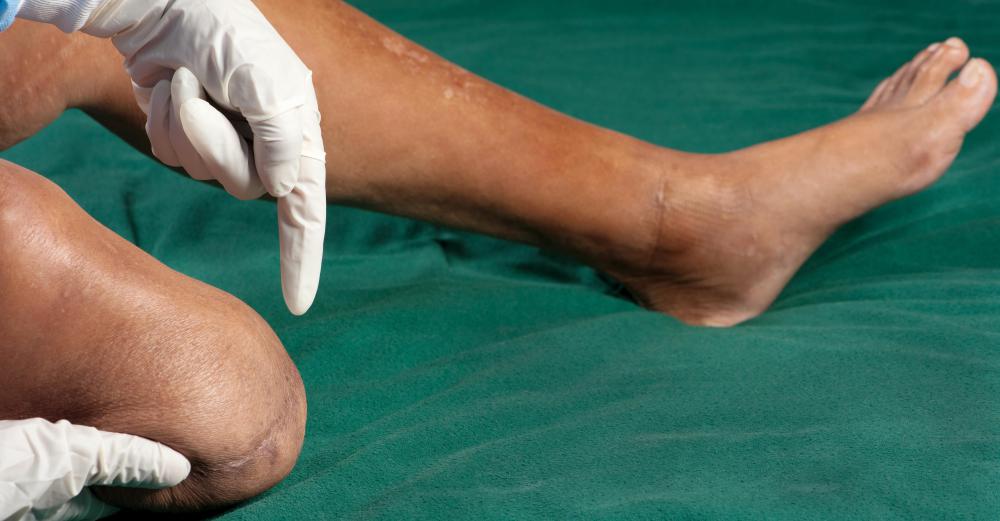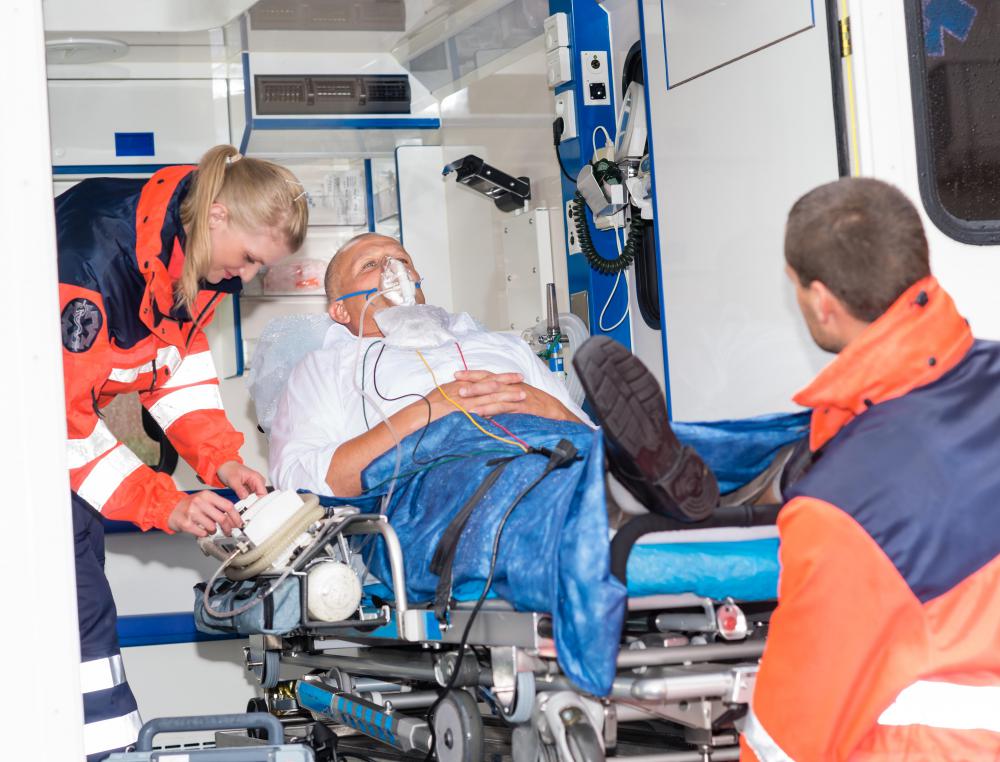At TheHealthBoard, we're committed to delivering accurate, trustworthy information. Our expert-authored content is rigorously fact-checked and sourced from credible authorities. Discover how we uphold the highest standards in providing you with reliable knowledge.
What is a Posterior Tibial Pulse?
A pulse is a rhythmic beat produced as a beating heart pumps waves of blood through blood vessels, causing them to expand. These pulsations can be felt in certain areas of the body. Blood pumped through the posterior tibial artery produces the posterior tibial pulse. "Posterior" is a term used to refer to the back or to a body part on or near the back side. The tibia is the medical name for the larger of the two bones that make up the lower leg.
The posterior tibial pulse can be felt by placing two fingers, usually the index and middle fingers, slightly above and toward the front of the rounded and bony part of the inside ankle joint. It can be very difficult to detect the pulse here, particularly for people who are not healthcare providers. It is not as strong as the carotid or radial pulses. Although heart rate can be determined by taking the pulse in this area, it is not used to determine heart rate or as a sign of life.

The posterior tibial artery is one of several important arteries in the body, and because of this, its pulse plays an important role in assessing the circulatory status of the lower leg. When an emergency medical technician (EMT) or paramedic attends to a patient who has injuries characteristic of a fractured lower leg, for example, the EMT or medic will feel for the posterior tibial pulse to ensure that the leg has circulation.

Medical injuries involving fractures of either of the two bones of the lower leg, depending on the degree of severity, can interrupt circulation. If this happens, the tissues will begin to die, which could mean that the leg has to be amputated. The presence of a pulse in the ankle at least tells the attending healthcare provider that there is some supply of oxygenated blood reaching the patient's lower leg. Such an assessment is vital to making proper splinting decisions and determining priority for transport to a medical facility.

While it is difficult to locate the posterior tibial pulse, there are a few tips that can be followed to make it easier. One of the most important things for individuals to remember is that the thumb has a pulse of its own, so it should never be used to take this or any other pulse in the body. Practicing on different people also is important to get a sense of where the pulse is found.
AS FEATURED ON:
AS FEATURED ON:
















Discussion Comments
@alisha-- The posterior tibial is one of the harder pulses to find. If you have trouble with it, you could also check for the femoral pulse in the thigh.
@alisha-- Locate the medial malleolus on the inner part of the ankle, it's a pointy joint. The posterior tibial pulse is located underneath. Use your two fingers to search for it, it's not very difficult to find.
Also, make sure to not press down too much when looking for pulsation. A slight pressure is best to locate it.
We learned how to take the posterior tibial pulse in first aid class but I still can't figure it out!
The teacher told me to practice at home with family members. I just tried finding it on my mom and dad but I can't! I use my index and middle finger and basically search behind the leg, slightly above the ankle. It's so hard!
I have no problems with the dorsalis pedis pulse. That one is right on top of the foot and so easy to find.
Post your comments